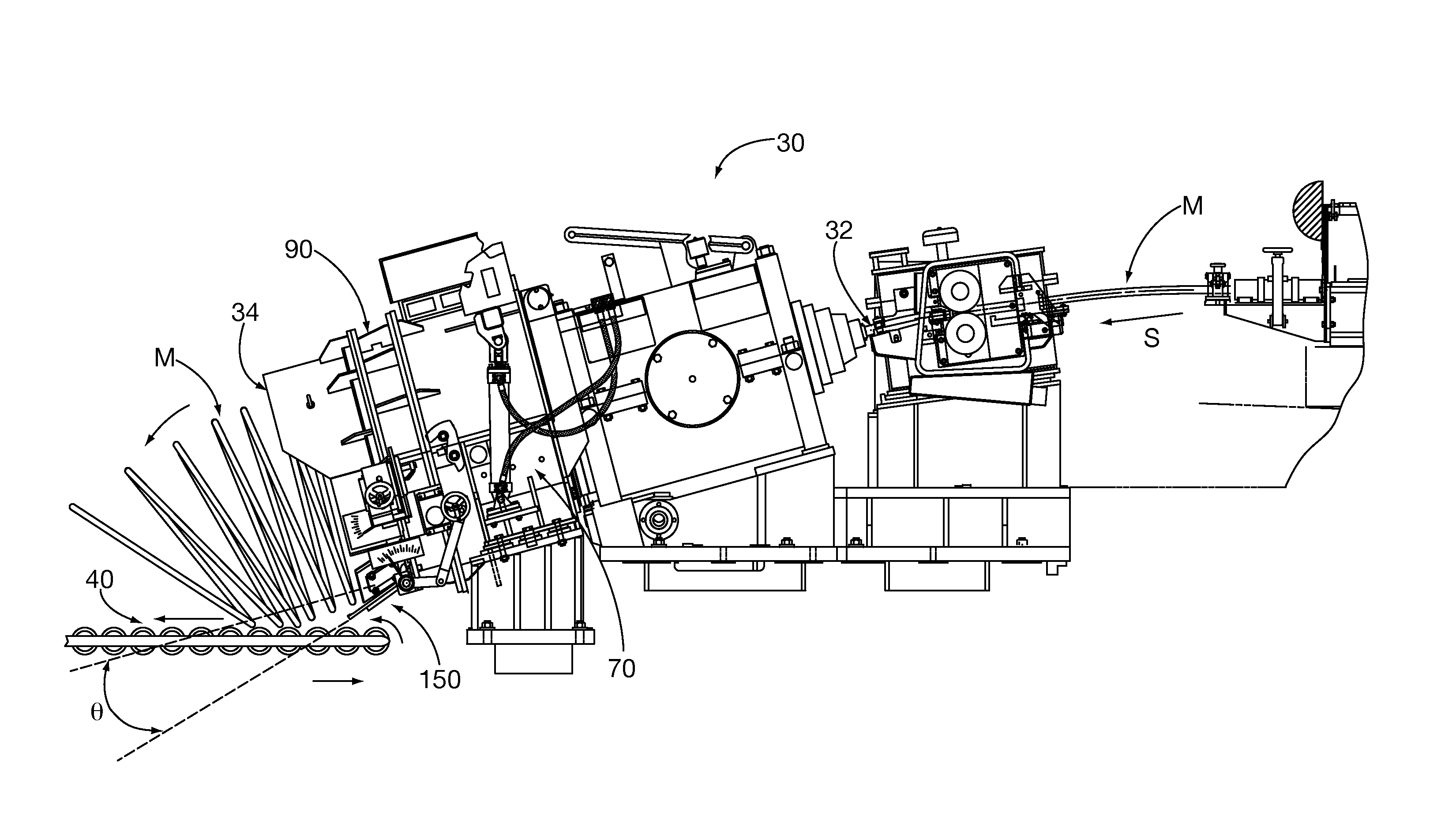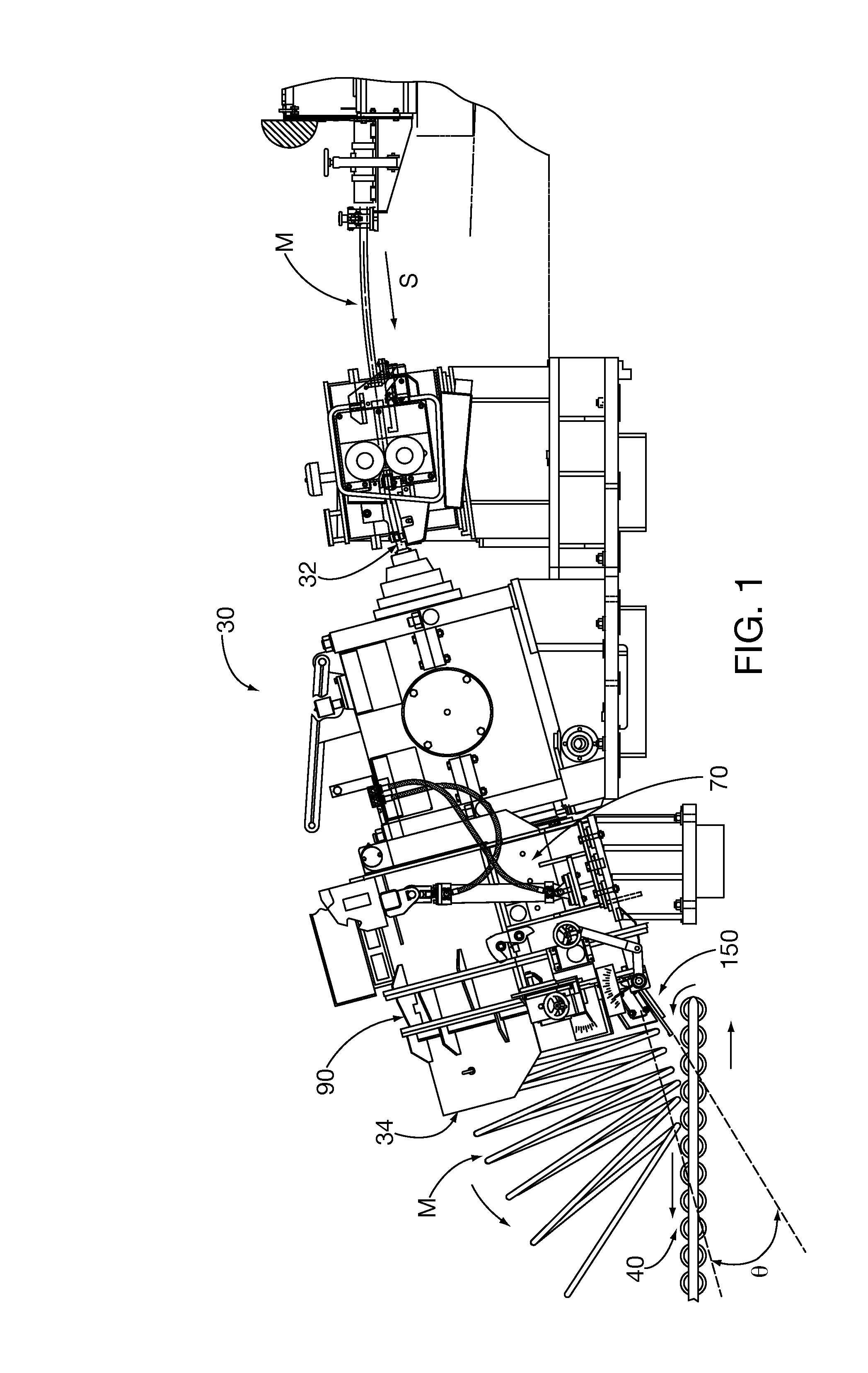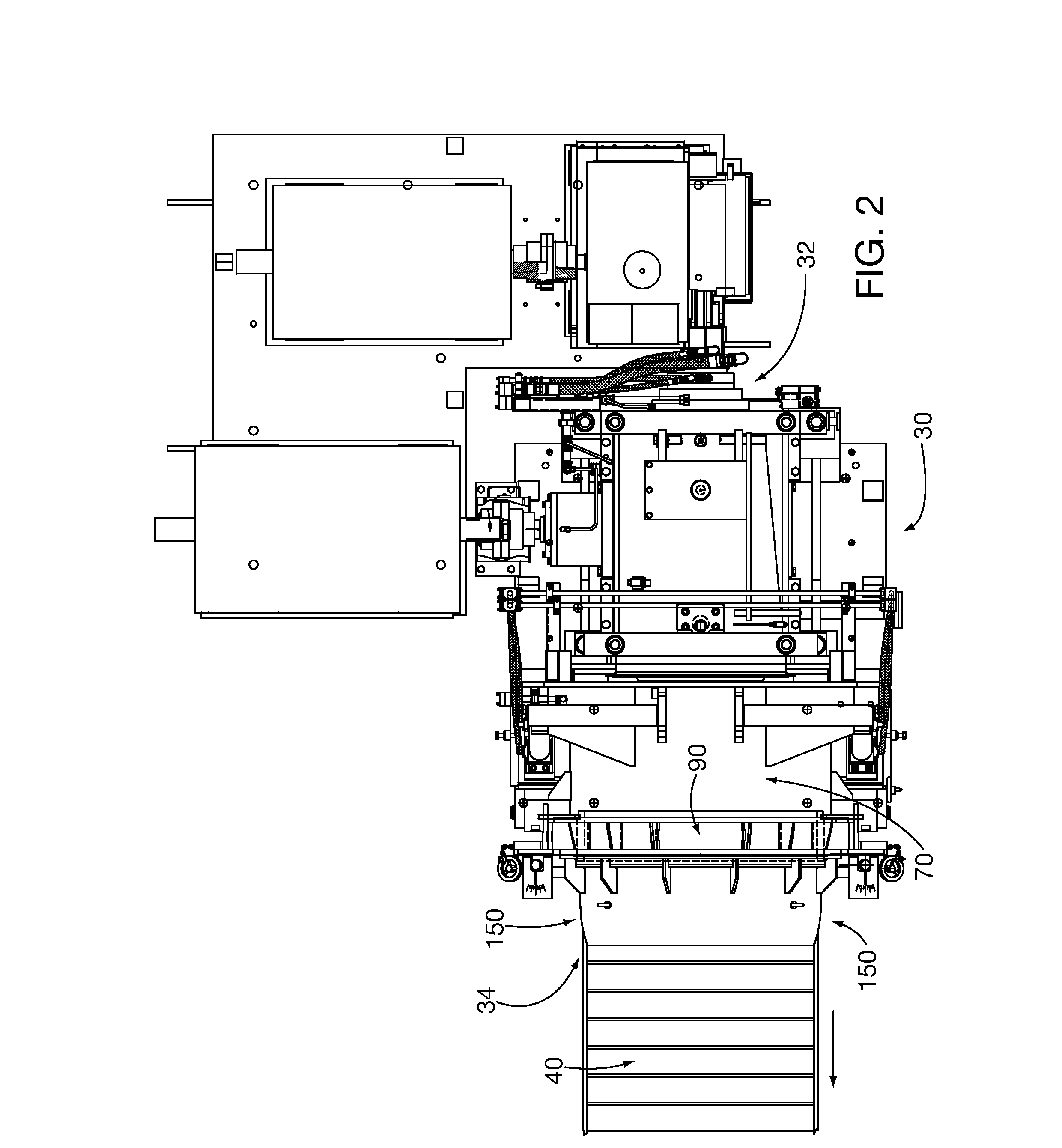Rolling mill laying head pipe having modular construction
- Summary
- Abstract
- Description
- Claims
- Application Information
AI Technical Summary
Benefits of technology
Problems solved by technology
Method used
Image
Examples
Embodiment Construction
[0038]After considering the following description, those skilled in the art will realize that the teachings of the present invention can be utilized in rolling mill coil-forming apparatus laying heads and more particularly to laying head elongated transport path pipes or other equivalent elongated structures for laying heads. Aspects of the present invention facilitate longer laying head path service life so that more tons of elongated material can be processed by the laying head before preventative maintenance replacement. For example, it is possible to increase the laying head elongated material processing speed so that more tons of elongated material can be processed in a production shift without undue risk of laying head path / pipe failure. A portion or the entire elongated structure is formed from modular, selectively replaceable components. The fabricated modular structures facilitate replacement of zones within the elongated path that are subject to greater wear than the rest ...
PUM
| Property | Measurement | Unit |
|---|---|---|
| Wear resistance | aaaaa | aaaaa |
| Structure | aaaaa | aaaaa |
Abstract
Description
Claims
Application Information
 Login to View More
Login to View More - R&D
- Intellectual Property
- Life Sciences
- Materials
- Tech Scout
- Unparalleled Data Quality
- Higher Quality Content
- 60% Fewer Hallucinations
Browse by: Latest US Patents, China's latest patents, Technical Efficacy Thesaurus, Application Domain, Technology Topic, Popular Technical Reports.
© 2025 PatSnap. All rights reserved.Legal|Privacy policy|Modern Slavery Act Transparency Statement|Sitemap|About US| Contact US: help@patsnap.com



